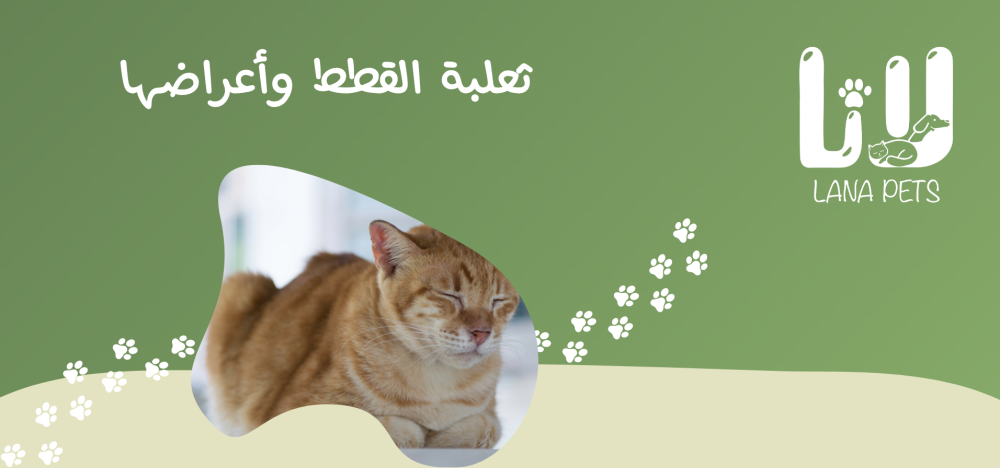
Alopecia in cats is the loss of hair in certain areas of the body. This disease occurs due to various reasons and cats can be infected at any age. In this article, we provide you with all the information about it in order to treat it correctly and maintain the health of your cat.
Cats get alopecia just like humans, and some may be surprised by this, but this condition does happen to cats and hair falls out from certain areas of the fur. It is important to know the causes of alopecia and how to treat and prevent it in order to keep your cat looking beautiful and healthy because these hairless spots may be accompanied by inflammation and painful symptoms for cats.
Causes of alopecia in cats
There are many reasons that lead to the occurrence of alopecia in cats at any age, the most prominent of which are the following:
- Food allergies: Some cats have food allergies to certain food components and eating foods containing these components leads to the appearance of alopecia.
- Skin diseases: Skin diseases that affect cats cause hair loss and alopecia. These diseases include fungi and skin infections.
- Environmental allergies: Some cats are very sensitive to environmental factors such as dust, cleaning materials, or humidity, and exposure to these factors leads to the appearance of skin problems, including alopecia.
- Parasites: Cats with parasites such as lice or ticks may experience irritation, itching, and hair loss in certain areas.
- Reaction to chemicals: If the cat is exposed to chemicals either through the air or chemicals commonly used in homes. It may suffer from hair loss in certain areas of the body.
- Chronic diseases: Some chronic diseases cause hair loss, such as thyroid disorders.
- Autoimmune disorder: A major cause of alopecia in cats is an immune disorder that causes the cat's body to mistakenly attack the hair follicles and cause hair to fall out in certain places.
- Heredity: Some cats get alopecia as a result of inheriting it from the father or mother, because it is a disease linked to different genes.
- Incorrect brushing method: Brushing a cat's hair incorrectly may cause hair loss in some areas.
- Severe infections: Exposure to severe infections may cause itching, redness and alopecia.
- Self-grooming: Some cats lick their fur excessively to reveal hairless areas.
- Not keeping your cat's nails clean: Unclean nails can cause bacteria and fungi to infect areas of the skin, leading to irritation and hair loss.
Symptoms of feline alopecia
Alopecia areata in cats is hair loss in certain areas. There are many symptoms, the most prominent of which are:
- Hair loss: This is the main symptom of alopecia areata, where hair is lost in specific areas. The amount of hair lost may be large or small, depending on the severity of the disease.
- Skin discoloration: Alopecia in cats may also cause discoloration of the affected areas, as the skin may appear red or pink.
- Itching and irritation: Cats suffer from severe itching in the affected areas, thus increasing skin irritation and discomfort.
- Skin swelling: The area affected by alopecia may swell, and this occurs in advanced cases.
- Scabs or sores: Sores or wounds may form in the area where the alopecia is located as a result of increased itching in this area.
- Changes in cat /li>
If you notice any symptoms in your cat, you should consult Lana Veterinary Clinic immediately to examine the cat, identify the cause of feline alopecia, and provide appropriate treatment for the condition depending on its severity.
Treatment of alopecia in cats
Treating alopecia in cats is very important in order to prevent the condition from developing and spreading throughout the body, and to relieve the itching that cats feel. Therefore, you should consult Lana Clinic to determine the appropriate treatment. Here is more information about the steps that Lana Clinic takes to determine the treatment:
- Examination of the condition: The veterinarian will begin by examining the cat's general condition in order to determine the cause of the hair loss and to see if the cat is suffering from other symptoms or not. A thorough examination will help identify the possible cause and treat it, thus treating the problem.
- Sample analysis: The vet may also request a hair or skin sample analysis to determine which fungal or bacterial diseases the cat may have that are causing the alopecia.
- Medical treatment: This includes using ointments or shampoos specifically designed for cats to treat skin infections if they are the cause. For example, antifungal medications if they are the cause.
There are other ways to treat alopecia in cats that the doctor recommends, which are:
- Getting rid of parasites: Alopecia may be caused by cats being infected with parasites such as ticks, lice, and fleas. Here, the treatment for alopecia lies in getting rid of these annoying insects.
- Change diet: Some cats need to change their diet if they are allergic to an ingredient that causes them an allergic reaction and the resulting harmful effects such as alopecia.
- Avoid exposure to irritants: Avoid exposing your cat to things that irritate the skin, such as strong chemicals. Therefore, it is preferable to use gentle detergents and avoid harsh detergents.
Tips for caring for cats with alopecia
Here are some tips to help you provide the necessary care for cats with alopecia:
- Trim the hair around the affected area and use medical compresses with the sterile Betadine to kill bacteria and prevent the spread of infection.
- Keeping your cat clean from insects such as fleas.
- Using antibiotics to get rid of the infection. One of the best antibiotics is antihistamine, which has an effective effect in getting rid of various skin diseases.
- Wear hand gloves when applying creams and ointments to the affected area.
- Provide a calm atmosphere in the home to reduce stress in cats with alopecia.
- Follow a balanced and healthy diet rich in fiber and other various nutrients that promote health.
- Take medications and treatments on time and do not miss appointments to get the best results.
- Do not neglect to take vaccinations and vaccines because they reduce the rate of infection and the spread of diseases that cause alopecia.
Is feline alopecia contagious to humans?
Alopecia in cats is not transmitted to humans because it is a skin disease specific to them and results from problems with their skin and hair. Therefore, it has nothing to do with humans. However, all necessary precautions must be taken when dealing with cats, especially if they suffer from a health condition such as alopecia or others. Because these problems may be the result of other causes that are harmful to humans. For example, fleas, ticks and other parasites that cause alopecia may be transmitted to humans. In the event of any damage resulting from raising cats, you should go to the doctor immediately to prescribe the appropriate treatment, and you should consult Lana Veterinary Clinic to prevent the transmission of cat diseases to humans.
In short, alopecia areata is a common disease among cats, especially street cats. Due to the increased chance of contracting diseases and infections that cause hair loss in certain areas of the fur, it is necessary to know the causes of alopecia and how to treat it in order to maintain the appearance and health of the cat.

